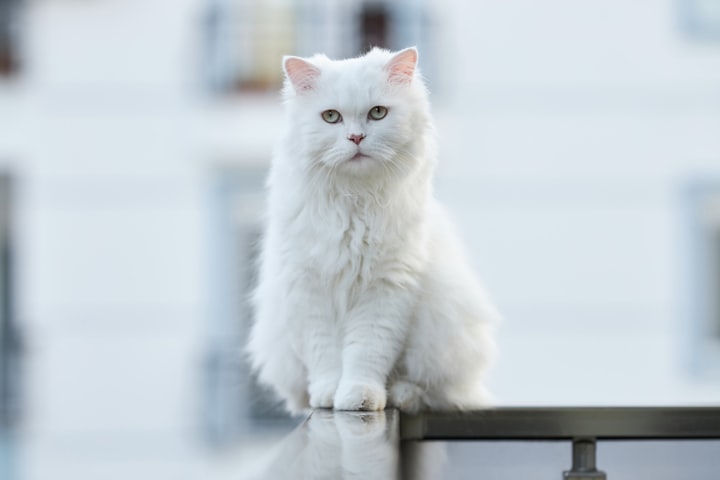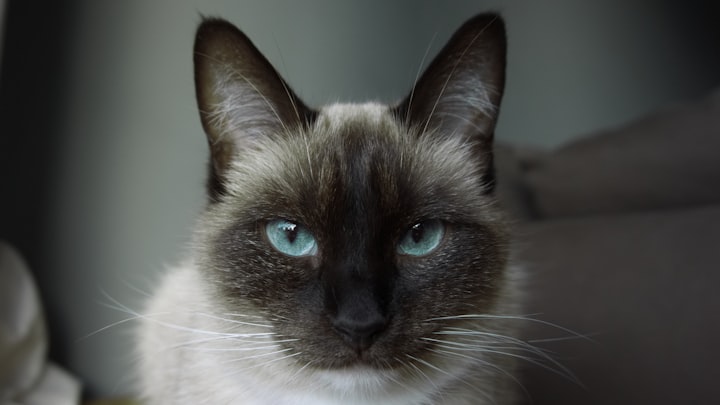The Elegant Black and White Turkish Angora Cat: A Comprehensive Guide
Discover the elegant Turkish Angora cat, a national treasure of Turkey. With a pointed face and silky medium-length coat, this playful and affectionate feline is a descendant of the African wildcat. Learn about the breed's characteristics, care, and personality traits in this comprehensive guide

The Elegant Black and White Turkish Angora Cat: A Comprehensive Guide
"Riya Das: Pet writer & enthusiast, offering expert insights on pet care, health, and training. A trusted authority in the pet niche, featured in top publications. Discover valuable tips for happy, healthy pets. Follow Riya now!"
Turkish Angora cats are a beautiful and ancient breed known for their elegant looks and graceful demeanor. The black and white Turkish Angora is a lovely and unique variety among the various color variations. This article will delve deeper into these captivating cats' history, characteristics, care, and personalities, providing a comprehensive guide for current and potential owners.
History and Origin of Turkish Angora Cats
A. Ancient Origin and Cultural Significance
Turkish Angora cats have ancient origins, with their roots in the Ankara region of Turkey. They are believed to be one of the oldest natural cat breeds, with their ancestors believed to have lived in the vicinity for hundreds of years. In Turkey, they hold cultural significance and are cherished for their beauty and companionship.
B. Historical records and popularity in Türkiye
Historical records show that Turkish Angora cats have been famous in Turkey for centuries. They often appeared in artwork and literature and were considered status and wealth symbols. The breed was highly prized for its luxurious coat, used to make clothing and accessories.
C. Introduction of Turkish Angora cats to other countries
The breed gained international recognition when introduced to other countries, mainly Europe and the United States, where they quickly became sought-after pets and show cats. The first documented Turkish Angoras arrived in France in the early 1600s, and with the aid of the 1700s, they were well-installed in Europe. In the 20th century, the breed's popularity spread to the United States, where they continued to be renowned for their beauty and elegance.
Also Read : Siamese Mix Cats: A Guide to Their Characteristics and Care
Features of Turkish Angora cats
A. general physical properties
Turkish Angora cats are known for their slim bodies, long legs, and plumed tails. They have a silky, medium-length coat and large, almond-shaped eyes. Their ears are large and pointed, with tufts of fur at the ends, giving them a distinctive look.
B. Black and white Turkish Angora-specific traits
Black and white Turkish Angoras often have a striking contrast between their black and white fur, which creates a unique and eye-catching appearance. The distribution of black and white hair can vary, with some cats having more black or white coats than others. This variation adds to each cat's personality.
C. coat pattern, eye color, and other distinguishing characteristics
The coat pattern of black and white Turkish Angoras can range from mostly white with black patches to a more evenly distributed mix of black and white fur. Eye color can also vary, with blue, green, amber, or even odd-eyed (two different colored eyes) being possible. Some black and white Turkish Angoras may also have a "van" pattern, where most of the body is white, with black markings mainly on the head and tail.
Care and grooming of black and white Turkish Angora cats
A. Diet and Nutrition Recommendations
A balanced diet with high-quality cat food is essential to maintaining your Turkish Angora's health and coat quality. It's important to choose a food that meets the nutritional needs of your cat's age, size, and activity level. Consult your veterinarian for specific recommendations.
B. Exercise and playtime needs
These energetic cats require regular exercise and playtime to stay happy and healthy. Interactive toys like feather wands or laser pointers can provide mental and physical stimulation. Feeding a cat tree or scratching post can also help keep your Turkish Angora entertained and engaged.
C. Regular grooming routine and coat maintenance
Regular grooming, including brushing and the occasional bath, will help maintain their luxurious coat and prevent matting. Use a smooth brush or comb to remove loose hair and tangles gently. Bathing your Turkish Angora every few months can help keep their coat looking clean and silky.
D. Health Considerations and Veterinary Care
Regular veterinary care, including vaccinations, dental checkups, and annual exams, is essential to the overall health of your Turkish Angora. Be aware of potential breed-specific health issues, such as hypertrophic cardiomyopathy and deafness, and discuss any concerns with your veterinarian.
Personality and behavior of black and white Turkish Angora cats
A. temperament and sociability
Turkish Angora cats are known for their affectionate and friendly natures, often forming strong bonds with their human companions. They are friendly, outgoing, and love to be the center of attention.
B. interactions with family members and other pets
They generally get along well with family members and other pets, making them great additions to any household. However, they can be more reserved around strangers or new environments. Proper socialization from an early age can help your Turkish Angora become more comfortable in various situations.
C. training and intelligence
Turkish Angoras are intelligent and can be trained to perform tricks or obey commands, making them a pleasure to interact with. They are also known for their curiosity and problem-solving abilities, often figuring out how to open doors or cabinets.
Adoption and breeding of Turkish Angora cats
A. Availability and sources for adoption
B. Responsible breeding practices and considerations
It is essential to follow responsible breeding practices, including genetic testing and ensuring the health and well-being of both parent cats and kittens. Work with a reputable breeder who prioritizes their cats' health and temperament.
Conclusion
Finally, black and white Turkish Angora cats are a stunning and unique variation of an already elegant breed. Their charming looks, affectionate nature, and intelligence make them an excellent addition to any family. By understanding their history, characteristics, and care requirements, you can ensure a happy and healthy life for your black and white Turkish Angora cat, and they can enjoy the beauty and companionship they bring into your home.
FAQ's
Q: Can Turkish Angora cats be black and white?
A: Yes, Turkish Angora cats can be black and white. This coloration version is one of the many viable coat hues for Turkish Angoras, and it is characterized by using a hanging comparison among the black and white fur, creating a wholly unique and beautiful look.
Q: What is a black Turkish Angora breed?
A: A black Turkish Angora is a variation of the Turkish Angora breed with predominantly black fur. However, when referring to a black and white Turkish Angora, it approaches the cat has an aggregate of black and white hair, growing a great and appealing coat pattern. The breed is understood for its fashionable appearance, narrow body, lengthy legs, plumed tail, and affectionate and friendly nature.
Q: How plenty is a Turkish Angora black and white?
A: The charge of a black and white Turkish Angora cat can range depending on elements such as the breeder's popularity, the cat's pedigree, and the supply of kittens. Prices can vary from some hundred dollars for a puppy-quality kitten to over one thousand bucks for a display-fine kitten. It's critical to research and select a reputable breeder who prioritizes the health and nicely-being of their cats. Also, check rescue businesses and shelters, as they will have Turkish Angora cats for adoption at a lower price.
Also Read : Siamese Mix Cats: A Guide to Their Characteristics and Care
About the Creator
Riya Das
Riya Das: Pet writer & enthusiast, offering expert insights on pet care, health, and training. A trusted authority in the pet niche, featured in top publications. Discover valuable tips for happy, healthy pets. Follow Riya now!






Comments
There are no comments for this story
Be the first to respond and start the conversation.